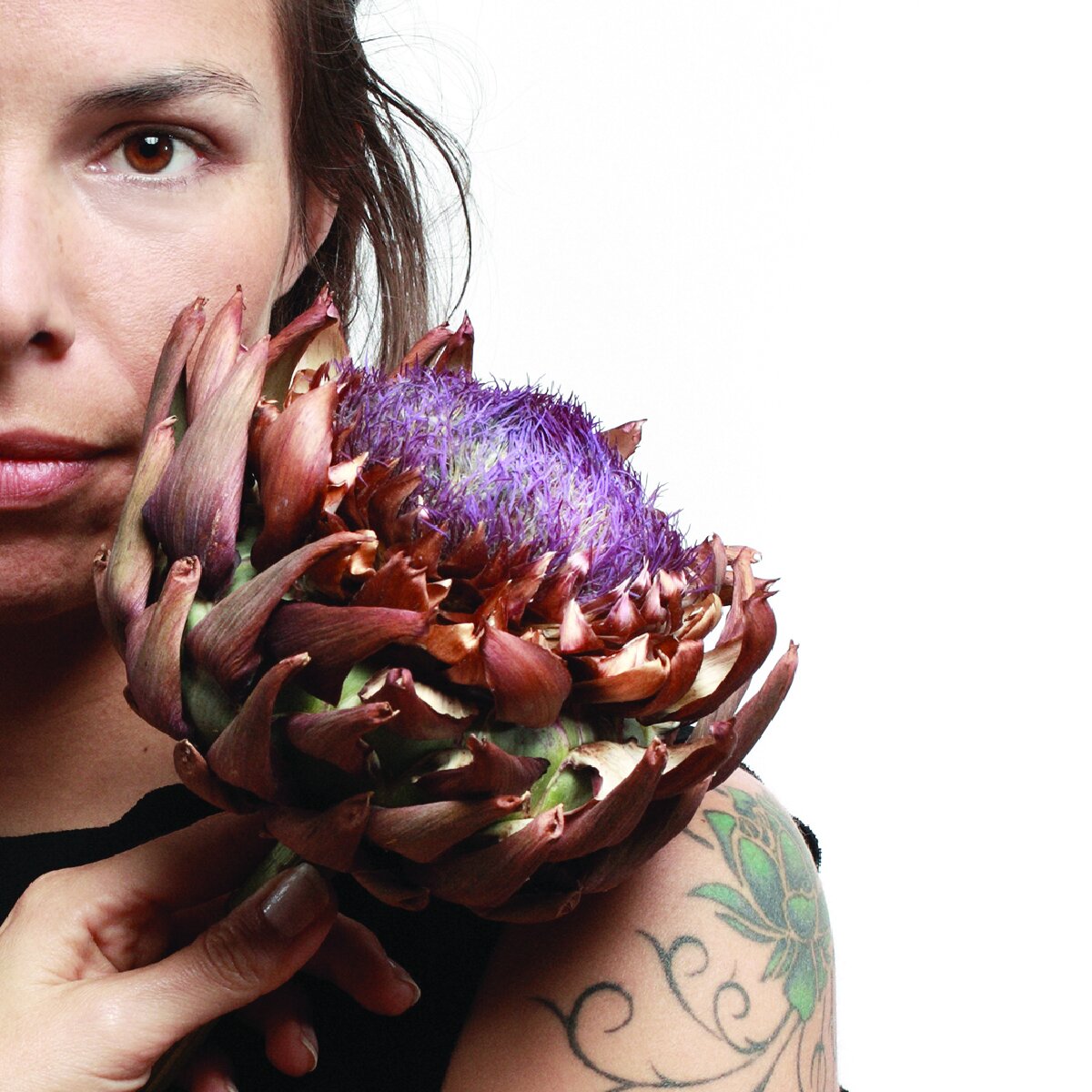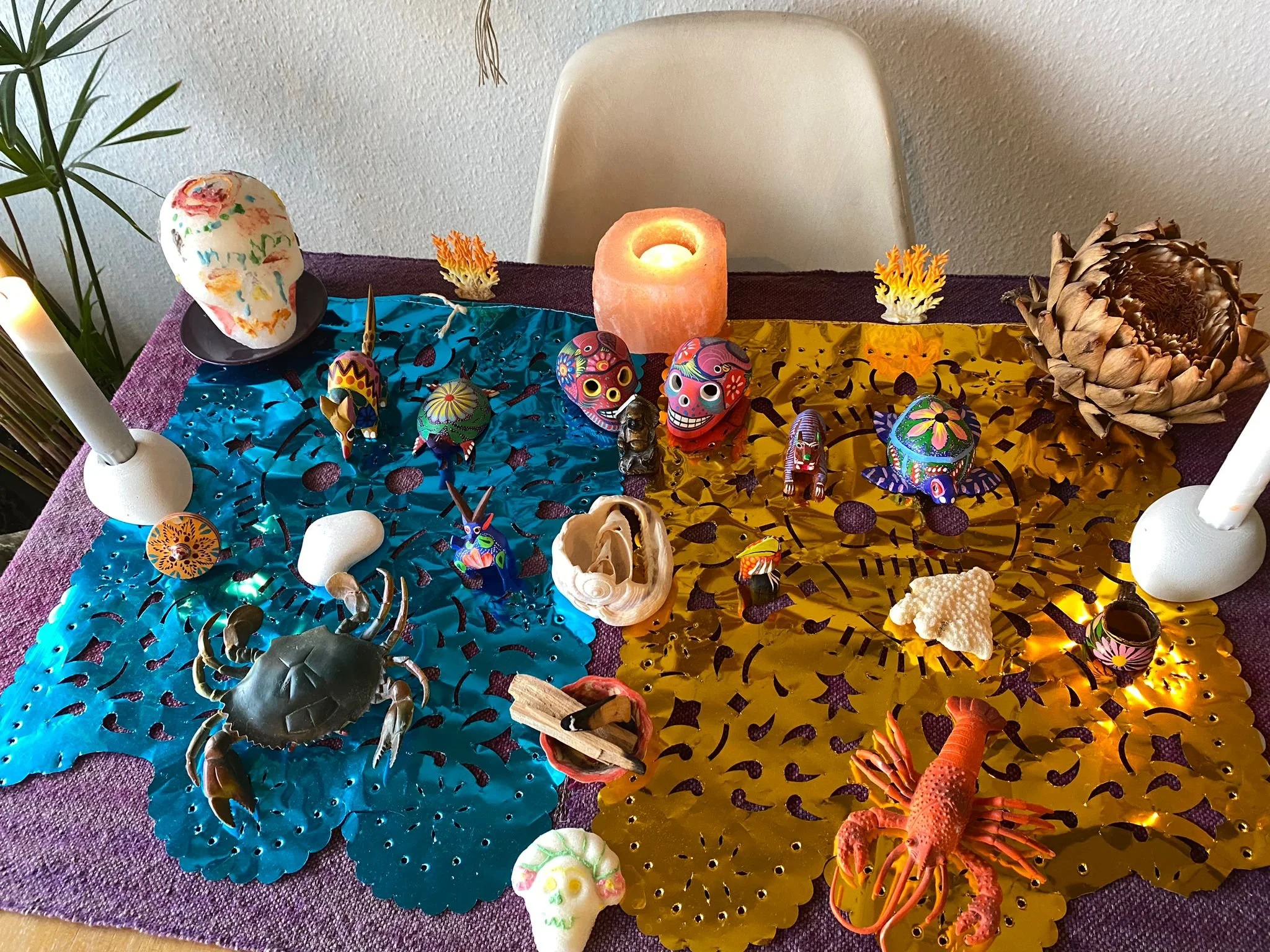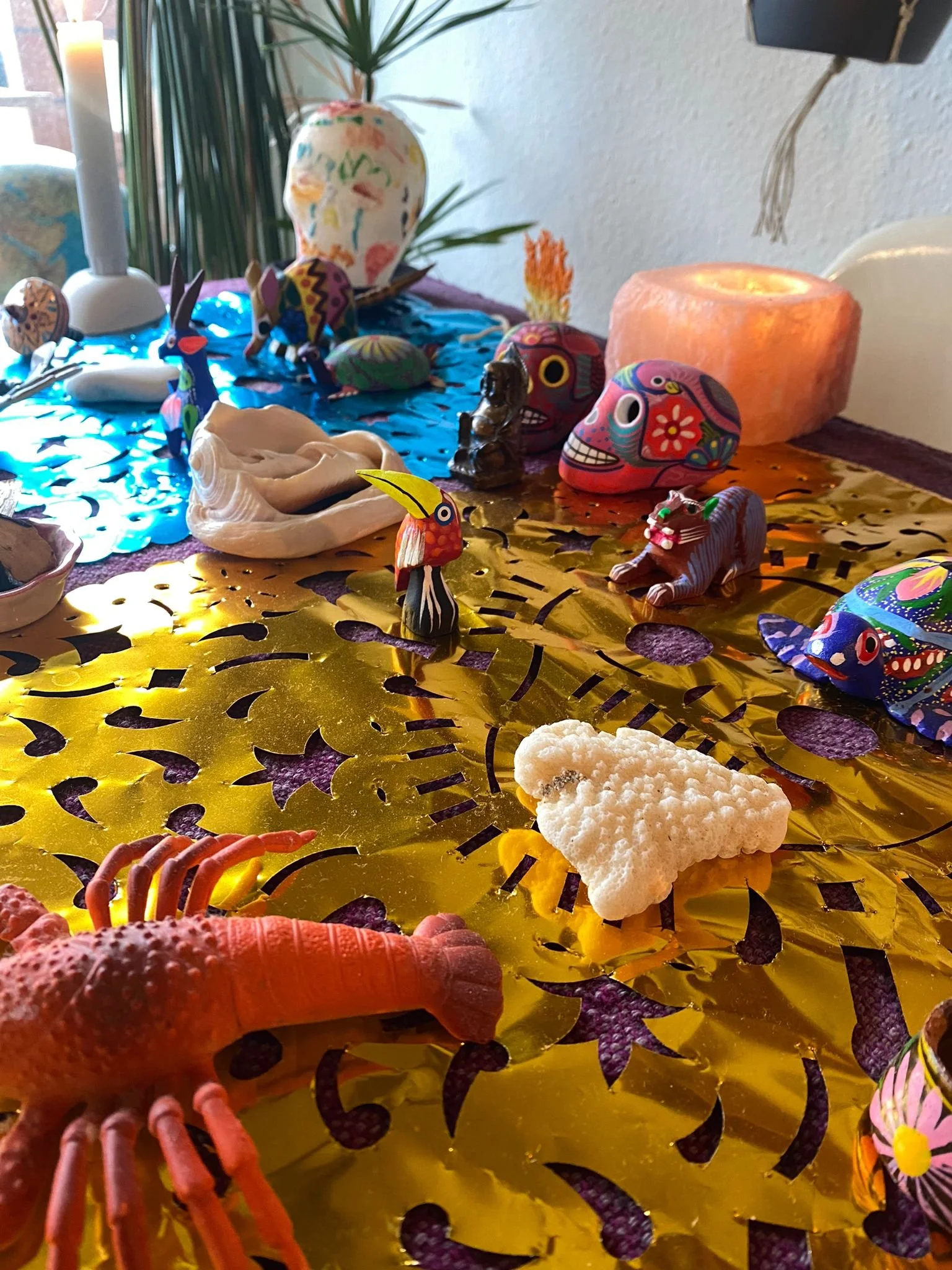Día de Muertos
If there is one Mexican tradition that fascinates me most, it’s definitely Día de Muertos. In recent years, this tradition has gained a flamboyant flare and global reach: In November, Mexico City –where I was born– dresses up in purple and orange and hosts an immense Día de los Muertos parade with hundreds of elegant dancing Catrinas –a character representing Death, typically sporting an early 20th-century post-revolution outfit and a French hat. However, these traditions have a pre-Hispanic origin, anchored in the indigenous peoples- who still vibrantly inhabit the current Mexican territory- their traditions, their spiritual deities, and their concepts and relationship to death and life.
As much as I rejoice in the celebratory aspect of Día de Muertos, to me, this tradition is much more intimate and ritualistic. As I get my altar settled, I remember my mother passing her heritage down to me and my memory unfolds: we set a family altar at my grandparents’ house and place Cempazúchitl petals (Aztec Marigold) from the house’s entry door all the way to our altar. My mother explains to me; This colourful petal path serves as a welcoming guide for our visiting ancestors. A way to find the altar holding offerings of sugar skulls, candles, flowers, their favourite foods and what they most enjoyed in life. I was 4 or 5 years old, and it all made perfect sense to me. I enthusiastically made the bright orange petal path myself.
Nowadays, I create my altar in a more intuitive way, with objects that have a symbolic meaning to me, representing what is gone, nostalgia, Saudades, the ephemeral, sweet memories of loss and the process of Death.
This past weekend, my partner deliberately asked me to make an altar. I do try to set it every year, but sometimes it slips my mind. I find it beautiful to notice how my homeland’s culture has seeped into my partner’s inner life through the porous surface of our relationship. I had to explain to him though, that Día de los Muertos is not celebrated on the same day as Halloween, therefore we had to wait a few days, and it was neither the same as Allerheiligen.
Día de Muertos got calendared on November 1st as part of the Spaniards’ efforts to convert the original inhabitants of Mexico to Catholicism. Little did they know of the resilience of pre-Hispanic indigenous Mexican cultures. Their conversion efforts would recreate Catholicism into a syncretic version of itself and –less than a few centuries later– this indigenous tradition would go global, be celebrated in many parts of the world and become one of the most shared Mexican export Cultural postcards. In part too, propped up by the convenience of the Spaniard’s recalendarisation.
Halloween (All-hallows Eve, Samhain) and All Saints’ Day (Allerheiligen) are celebrations rooted in ancient traditions too. Particularly, in the Celtic culture and Pagan rituals inspired by the seasonal cycles of nature. They correspond to the end of harvest, right before the unfolding of Winter. Finding a connection to this tradition, through your own ancestral roots is actually quite possible, while also appreciating, respectfully, the traditions from other parts of the world, without falling into the traps of cultural appropriation– a topic, by the way, included and widely discussed in our Teacher Training.
I am always pleased to share with all of you this tradition every November. Today (or in the following days) I invite you to take space to set a little altar, find out and learn from how your ancestors embraced Death and the end of cycles in their traditions. Take time to sit with these topics. Confronting us face-to-face with Death, loss, uncertainty and the ephemeral, is one of the best medicines to cultivate a vibrant lucid life, especially during times of great change and turmoil.
Feliz Día de los Muertos.


